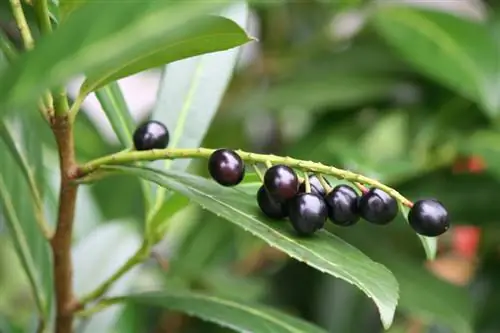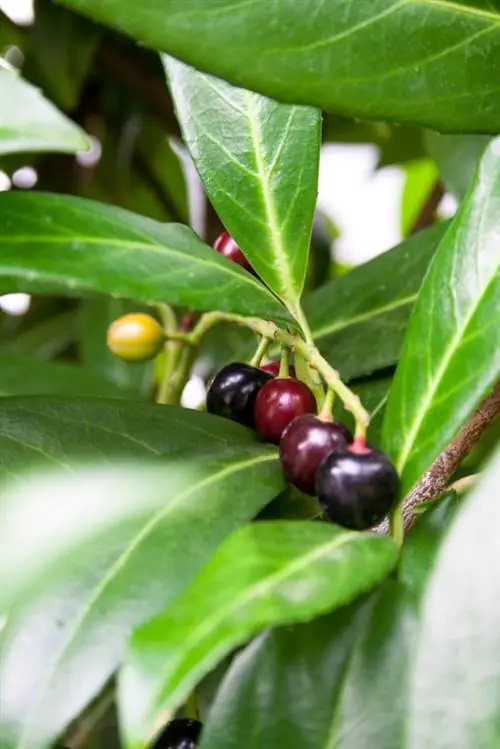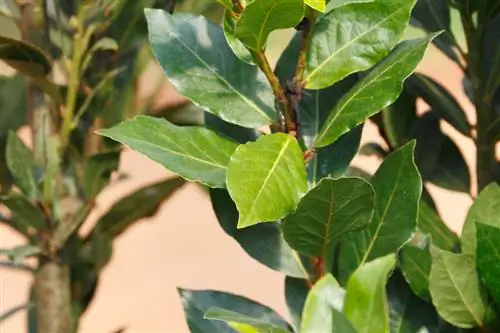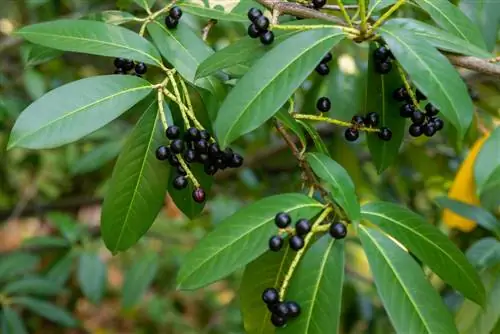- Author admin [email protected].
- Public 2023-12-16 16:46.
- Last modified 2025-06-01 06:02.
It was quickly decided, the laurel cherry was planted. Especially those who have small children are unsettled and quickly ask themselves the question: Is the laurel cherry poisonous?
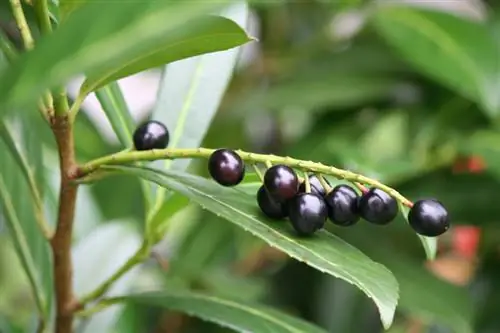
Is the laurel cherry poisonous?
The cherry laurel is poisonous in all parts of the plant, especially seeds and leaves, which contain cyanogenic glycosides such as hydrogen cyanide. Symptoms of poisoning include dizziness, nausea, gastrointestinal complaints, headaches and breathing problems. The fruits are edible without seeds when heated.
Poisonous yes - fatal poisonings unlikely
The laurel cherry is poisonous to humans and animals in all parts of the plant - more or less. The seeds and leaves are considered the most dangerous. The harmful substances are cyanogenic glycosides and in particular hydrogen cyanide. Symptoms of laurel cherry poisoning can include:
- Vertigo
- Nausea and vomiting
- Gastrointestinal complaints
- Headache
- Breathing problems
Only the fruits without the seeds inside are edible. But to do this they have to be heated, for example to make jam or jelly. The cooking process destroys most of the hydrogen cyanide, the rest is easily excreted from the body via the kidneys.
Tips & Tricks
It is best to cut away the cherries that are tempting to children within their reach. Most bay cherry varieties produce fruit in late summer to fall.

